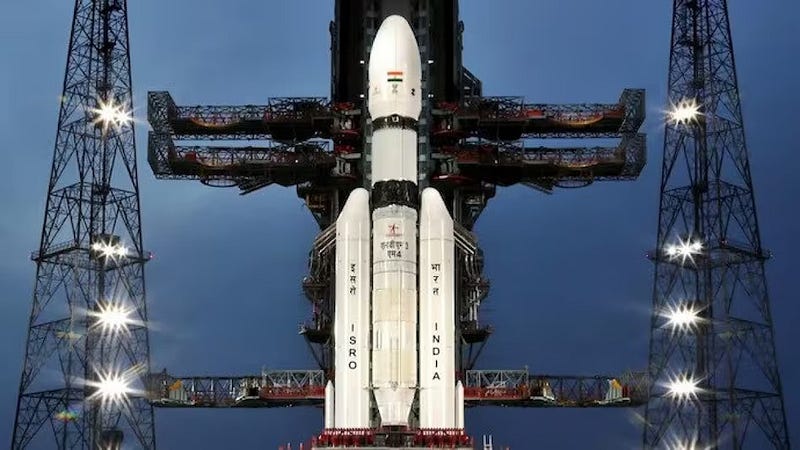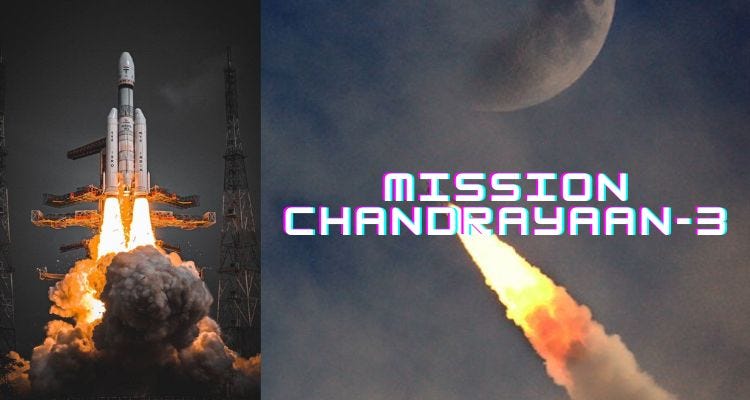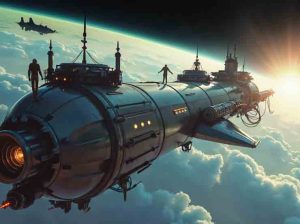

The universe is a vast and amazing expanse that includes all of space, time, matter, and energy. It is the totality of everything that exists, from the tiniest particles to the largest galaxies. The study of the universe, known as cosmology, seeks to understand its origin, structure, and evolution.
The universe is believed to have emerged approximately 13.8 billion years ago in an event known as the Big Bang. At that moment, all matter and energy were concentrated in an extremely dense and hot state. As the universe expanded, matter began to cool and form the building blocks of galaxies, stars, and planets.
Galaxies are vast collections of billions or even trillions of stars held together by gravity. They come in various shapes and sizes, ranging from spiral galaxies with distinct arms to elliptical galaxies with a more rounded shape. These galaxies are not scattered randomly but rather organized into clusters and superclusters, creating a cosmic web-like structure.
Stars are the fundamental objects in the universe. They are massive spheres of hot, glowing gas that generate energy through nuclear fusion. Stars vary in size, temperature, and color, from small, dim, and cool red dwarfs to massive, hot, and bright blue giants. Within the intense heat and pressure of stars, lighter elements are fused together to form heavier elements, including those necessary for the existence of life.
Planets are celestial bodies that orbit stars and do not produce their own light. They come in a wide range of sizes and compositions. Our own solar system consists of the Sun, eight planets (including Earth), numerous moons, asteroids, and comets. Earth, the third planet from the Sun, is a unique haven for life, with a diverse biosphere and a complex interplay of geological and atmospheric processes.
The universe is not only composed of ordinary matter but also contains mysterious entities such as dark matter and dark energy. Dark matter, which cannot be directly observed, is believed to account for the majority of the universe’s mass, exerting gravitational influence on visible matter. Dark energy, on the other hand, is an even more enigmatic force that is thought to be responsible for the accelerating expansion of the universe.
Exploring and understanding the universe is a multifaceted endeavor that involves a combination of observations, theoretical models, and technological advancements. Scientists employ telescopes, space probes, and advanced instruments to study distant celestial objects, measure cosmic phenomena, and unravel the mysteries of the cosmos.
The universe continues to fascinate and captivate us, offering endless possibilities for discovery and contemplation. Its sheer scale and complexity inspire us to explore the unknown and seek answers to fundamental questions about our place in the cosmos.
What we know about India’s Chandrayaan Moon Landing mission

Chandrayaan is a series of lunar exploration missions conducted by the Indian Space Research Organisation (ISRO). “Chandrayaan” is a Sanskrit word that translates to “Moon vehicle” or “Moon journey.” The Chandrayaan missions aim to explore and study various aspects of the Moon, including its surface, composition, and the presence of water ice.
The first mission in the Chandrayaan series was Chandrayaan-1, which was launched on October 22, 2008. It was India’s first lunar probe and operated successfully for about 10 months. Chandrayaan-1 carried several scientific instruments, including a high-resolution camera, a lunar mineralogy mapper, and a moon impact probe. One of its most famous accomplishments was the detection of water molecules on the surface of the Moon.
Chandrayaan-2, the second mission in the series, was launched on July 22, 2019. It was a more ambitious mission that aimed to place a lander and rover on the lunar surface. The mission comprised an orbiter, a lander named Vikram, and a rover called Pragyan. However, during the landing attempt, the lander deviated from its intended path, and communication with it was lost. Despite the partial failure, the orbiter component of Chandrayaan-2 remains operational and continues to provide valuable data about the Moon.
The Chandrayaan missions have contributed significantly to our understanding of the Moon. They have helped uncover evidence of water ice in permanently shadowed regions near the lunar poles, which has important implications for future human exploration and potential resource utilization. The missions have also provided detailed maps of the Moon’s surface and valuable scientific data on its mineralogy, topography, and exosphere.
How does the satellite function
Satellites, also known as artificial satellites, are objects that are intentionally placed into orbit around the Earth or other celestial bodies. They play a crucial role in various fields such as communication, weather monitoring, navigation, scientific research, and more. Satellites work based on a combination of principles from physics and engineering. Here’s a general overview of how satellites function:
Orbit: Satellites are launched into specific orbits around the Earth. The choice of orbit depends on the purpose of the satellite. Common types of orbits include low Earth orbit (LEO), geostationary orbit (GEO), and polar orbit.
Launch and Deployment: Satellites are typically launched into space using rockets. Once in space, they are deployed from the rocket’s upper stage or a dedicated deployment system. This allows them to separate and enter their intended orbit.
Motion and Speed: Satellites move in orbit due to the balance between their gravitational attraction to the Earth and the centrifugal force caused by their speed. This motion results in a continuous state of freefall, where the satellite falls toward the Earth but keeps missing it due to its forward velocity.
Communication: Satellites designed for communication purposes carry transponders or communication payloads. These payloads receive signals from ground-based transmitters and retransmit them back to Earth. This enables communication between different locations on Earth, such as satellite phones, television broadcasts, internet connectivity, and global positioning systems (GPS).
Sensors and Instruments: Satellites used for scientific research, weather monitoring, and Earth observation carry various sensors and instruments. These sensors capture data about the Earth’s atmosphere, oceans, land, weather patterns, and more. The collected data is then transmitted back to Earth for analysis and use in scientific research, weather forecasting, environmental monitoring, and other applications.
Power and Control: Satellites require a power source to operate their systems and instruments. Solar panels are commonly used to harness the Sun’s energy and convert it into electricity. The satellite’s onboard computers and systems control its functions, including attitude control, which adjusts the satellite’s orientation and pointing direction.
Ground Control: Satellites are monitored and controlled from ground-based control centers. These control centers track the satellite’s orbit, receive and analyze data from the satellite, and send commands to adjust its operations. Ground control also ensures the satellite’s health, monitors its systems and plans for its mission operations.
Overall, satellites operate by maintaining stable orbits, receiving and transmitting signals or collecting data, and fulfilling specific objectives based on their purpose. They enable a wide range of applications, from telecommunications and weather forecasting to scientific research and navigation systems, significantly benefiting our modern world.
In relation to Chandrayaan 3

Chandrayaan-3 is a follow-up mission to Chandrayaan-2 according to ISRO that will demonstrate end-to-end capability in safe lunar landing and wandering. It has a Lander and a Rover configuration. LVM3 will launch it from SDSC SHAR in Sriharikota. The lander and rover configuration will be carried by the propulsion module until they reach 100 km lunar orbit. The Spectro-polarimetry of Habitable Planet Earth (SHAPE) payload aboard the propulsion module is used to analyze spectral and Polarimetric measurements of Earth from lunar orbit.
In February 2022, ISRO and NASA agreed to use the latter’s Deep Space Network (DSN) to provide communications during Chandrayaan 3. It was included as a minor footnote in India’s Department of Space’s February monthly summary. As part of a broader technical assistance agreement negotiated between ESA and ISRO in July 2021, ESA will also offer backup communications for Chandrayaan 3 via their Estrack network.
ISRO communicates with its planetary spacecraft primarily using its own Indian Deep Space Network, but also collaborates with other space organisations for backup and secondary options. DSN support was also provided for India’s Chandrayaan 1 orbiter.
The Indian Space Research Organization’s (ISRO) Chandrayaan-3 mission launched out from the Satish Dhawan Space Centre in Sriharikota, Andhra Pradesh, at 2.35 PM IST on Friday, July 14.
Sixteen minutes after lift-off, the propulsion module successfully separated from the rocket and would orbit the Earth 5–6 times in an elliptical cycle with 170 km closest to the Earth and 36,500 km furthest from the Earth, eventually settling into lunar orbit.
The Chandrayaan missions have demonstrated India’s developing space exploration and research capabilities. They have contributed to the global scientific community’s attempts to solve the Moon’s riddles and learn more about the planets in our solar system.
Disclaimer
The information provided by Web Arbiter (‘we’, ‘us’, or ‘our’) on https://webarbiter.in/ . The website is for general informational purposes only. All information on the Site is provided in good faith, however we make no representation or warranty of any kind, express or implied, regarding the accuracy, adequacy, validity, reliability, availability, or completeness of any information on the Site. UNDER NO CIRCUMSTANCE SHALL WE HAVE ANY LIABILITY TO YOU FOR ANY LOSS OR DAMAGE OF ANY KIND INCURRED AS A RESULT OF THE USE OF THE SITE OR RELIANCE ON ANY INFORMATION PROVIDED ON THE SITE. YOUR USE OF THE SITE AND YOUR RELIANCE ON ANY INFORMATION ON THE SITE IS SOLELY AT YOUR OWN RISK.







This article offers a fascinating perspective on the subject. The depth of research and clarity in presentation make it a valuable read for anyone interested in this topic. It’s refreshing to see such well-articulated insights that not only inform but also provoke thoughtful discussion. I particularly appreciated the way the author connected various aspects to provide a comprehensive understanding. It’s clear that a lot of effort went into compiling this piece, and it certainly pays off. Looking forward to reading more from this author and hearing other readers’ thoughts. Keep up the excellent work!
Great article! I found your perspective on this topic both enlightening and thought-provoking. The way you break down complex ideas into understandable insights is truly commendable. It’s interesting to see how these developments could shape our future. I’m particularly intrigued by your point about potential challenges and would love to dive deeper into that.
For those who are interested in exploring this topic further, I recommend checking out this resource for more detailed information: comprehensive guide. It offers additional insights that complement what’s discussed here.
Looking forward to hearing others’ thoughts and continuing this discussion. Thanks for sharing such valuable information!
Your style is so unique compared to many other people. Thank you for publishing when you have the opportunity,Guess I will just make this bookmarked.2